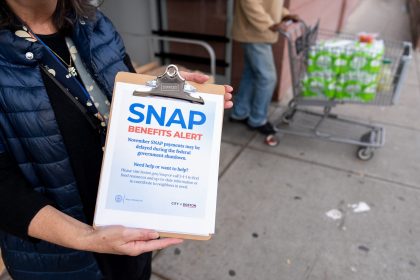Prapass Pulsub/Getty Images
Key takeaways
- You can check your bank account balance via your bank’s mobile app, online bank website, ATM, over the phone, via your bank statement or through an in-branch visit.
- Mobile apps check your balance in under 10 seconds and offer real-time alerts. Desktop banking provides detailed transaction history and statement downloads. ATMs and phone banking work without internet access.
- Always use strong passwords and two-factor authentication when checking balances online. Never check your balance on public WiFi networks.
Your bank balance is available instantly through your phone, computer, or even without internet access. Mobile apps show your balance in seconds, desktop banking gives you detailed transaction history and ATMs work offline.
Here’s how each method works and when to use it.
Ways to check your account balance
On the bank’s website
Online banking gives you the full picture — detailed transaction history, downloadable statements and more. It’s the method of choice when you need to do more than just glance at your balance.
- Log into your bank’s official website (never click links in emails — type the URL directly to avoid phishing)
- Enter your username and password plus any two-factor authentication
- Your balance will often display on the dashboard immediately after login
Not all bank websites offer the same experience. Online-only banks (due to their digital nature) tend to invest heavily in user experience and often offer a better online experience. If you’re routinely frustrated by your bank’s website, you’re not imagining it — some institutions are decades behind in digital experience.
On a mobile banking app
Mobile banking apps have become the de facto standard for balance checking — and for good reason. They deliver instant access, real-time alerts and biometric security that makes checking your balance faster than brewing coffee.
How to check your balance through your mobile app:
- Download the app from your bank’s website or the app store of your choice.
- Sign in to your account using the same credentials as you do for your desktop-based online banking system.
- Navigate to the account information section. Most mobile banking apps provide an up-to-date view of your account balance and recent transactions.

“Checking my balance on my bank’s mobile app takes less than five minutes. All I have to do is click on the app on my phone and then enter my username and password. It’s quick and easy.”
— Sheiresa Ngo, Bankrate deposits writer
At an ATM
ATMs are the best option when you don’t have internet access or you’re already withdrawing cash.
- Find an ATM that is part of your bank’s fee-free network to avoid getting charged for checking your balance.
- Insert your debit card, enter your PIN (shield the keypad with your hand to prevent skimming)
- Select “Balance Inquiry” from the menu, and your balance should appears on screen
- You can print a receipt or decline.
What to know: The average total ATM fees hit $4.86 in 2025 according to Bankrate’s latest Checking Account and ATM Fee Study. Do this a few times per month and you’re wasting $60-100 per year on something that’s free via your mobile app.
Over the phone
Most banks still offer telephone banking services, which allow you to check your account balance by phone.
- Call the phone number on the back of your debit card (you can also Google for your bank’s general number).
- Follow the prompts from the automated voice system to access your account balance.
- Verify your identity with your account number and PIN, and listen to your balance and recent transactions.
Through bank statements
Bank statements aren’t for real-time balance checks — they arrive days or weeks after month-end. They’re for understanding your spending patterns, not knowing what you have right now.
- Log into your online banking platform and navigating to “Statements” or “Documents.”
- Paper statements arrive by mail 3-7 business days after month-end.
Many banks now charge $2-5 per month for paper statements — so it’s best to opt for digital payments when you can. Here are some other sneaky bank fees (and tips to avoid them).
With a bank teller
If you do your banking at a bank with physical locations, you can still ask for face-to-face balance updates in a branch location.
- Bring your account number, bank card, and ID for identity verification.
- The teller can provide your balance verbally or print out recent transactions.
Why checking your balance regularly matters more than you think
Regular balance monitoring isn’t just good practice — it’s one of the highest-ROI financial habits you can build. Here’s what the data shows:
- You’ll avoid costly overdraft fees: The math is simple: The average overdraft fee is $26.77, according to Bankrate data. If checking your balance twice a week prevents just one overdraft per year, you’ve saved over $25 for less than 5 minutes of total time.
- You’ll catch fraud before it drains your account: According to research from J.D. Power, 29% of bank customers experienced fraudulent activity in the past 12 months. “Customers who check their balance weekly are much more likely to catch fraudulent charges within 24 hours, when banks typically offer the strongest fraud protection,” says Hanna Horvath, CFP and Bankrate banking editor. “The longer fraud goes undetected, the harder it becomes to recover funds.”
- You’ll save more money overall: When you see your balance regularly, you may become more conscious of spending and make better financial decisions in the moment.
Protect your bank information when checking your balance
When checking your bank account balance, it’s essential to protect your personal information from hackers or scammers. Here When checking your balance online or through apps, take these security precautions:
- Check for ATM tampering before inserting your card — loose parts or odd attachments are red flags
- Use strong, unique passwords for your bank accounts and change them regularly
- Enable two-factor authentication for an extra layer of security
- Never check balances on public WiFi at coffee shops, airports, or hotels
- Type your bank’s URL directly instead of clicking links in emails to avoid phishing scams
- Shield your PIN when using ATMs to prevent skimming devices from capturing it
Next steps
Why we ask for feedback
Your feedback helps us improve our content and services. It takes less than a minute to
complete.
Your responses are anonymous and will only be used for improving our website.
Help us improve our content
Read the full article here
















